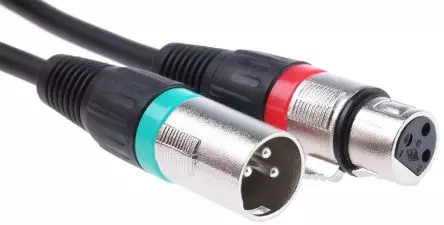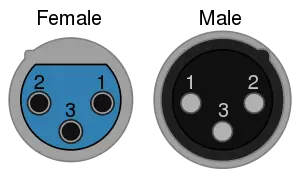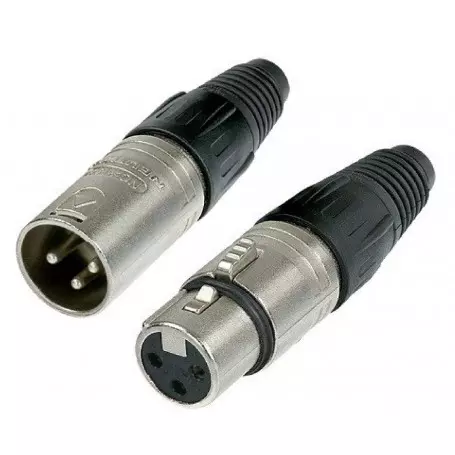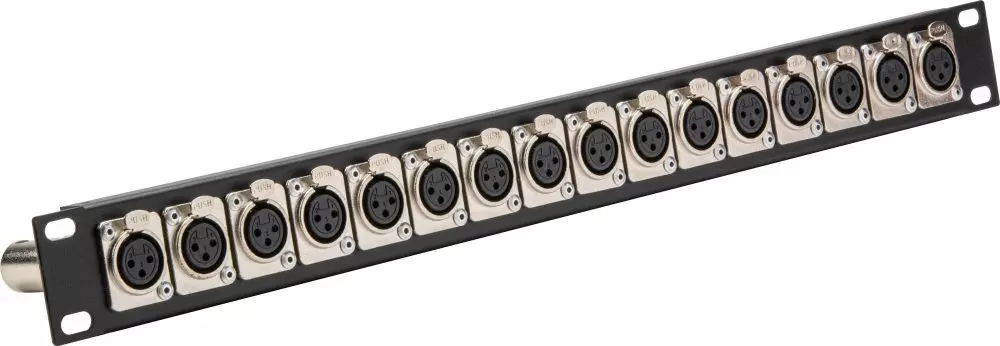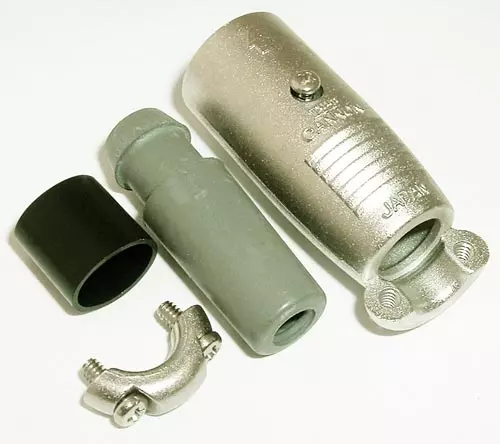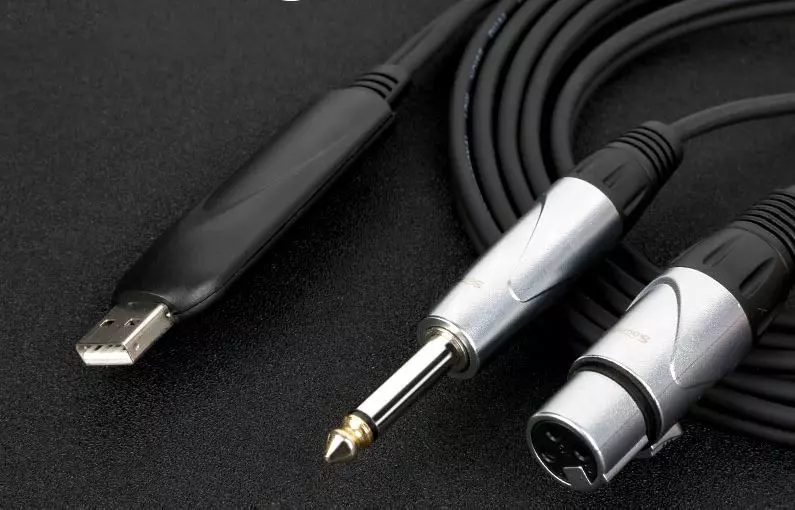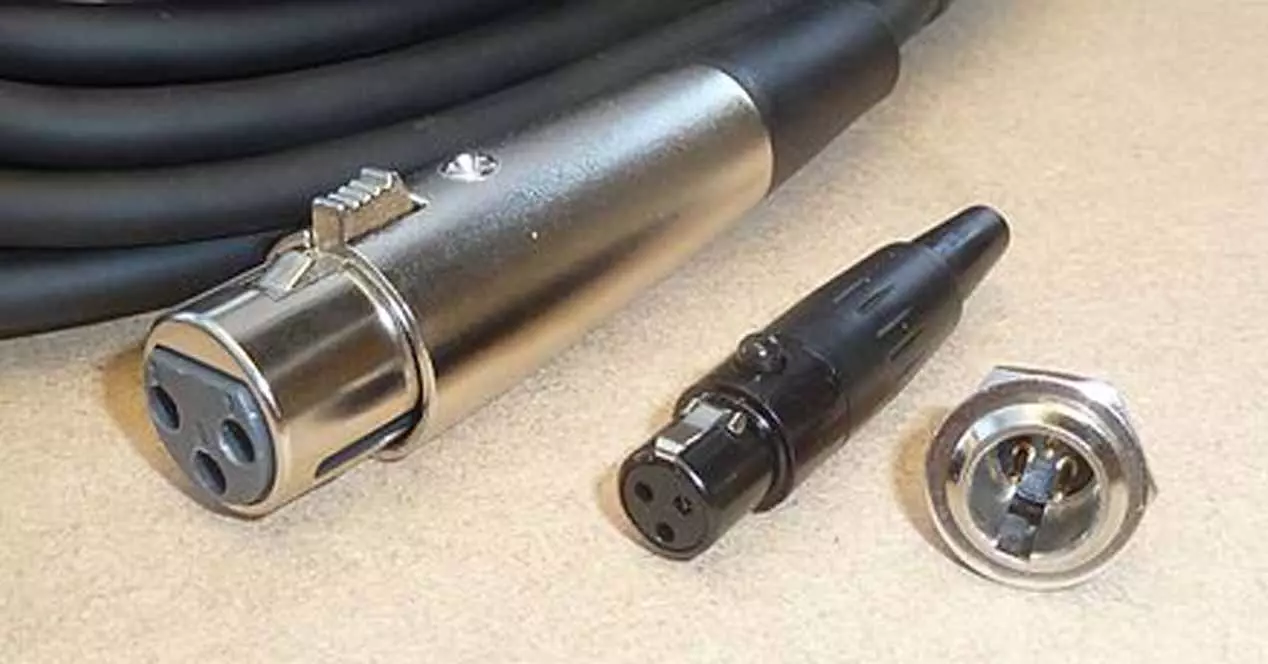
At the domestic level or even for amateurs who aspire to set up a professional audio system, we currently have three connection options for sound devices (be they microphones, headphones, speakers, preamps, etc.): USB, which is the most widespread globally due to its versatility and faculty, Jack (and 3.5 mm minijack) which is the one used in the domestic industry since time immemorial, and XLR which is usually left a bit aside due to its more professional-oriented characteristics, since they require less universal equipment than USB or the jack for their connection.
What is the XLR connector and how does it work?
XLR comes from English, and is the acronym for eXternal Line Return or «external return line» in Spanish, and has the peculiarity that it is the connector balanced Most used in professional audio applications, although it is true that it is also used in some lighting systems because it allows transmitting the digital DMX control signal.
Actually the technical name of this type of connector is not XLR but XLR-3, since the 3 indicates that it has three connection pins or pins, although this digit is usually omitted because although the standard has other variants with 4, 5, 6, 7 and up to 8 pins, the most used has been always the variant of 3 (that is, whoever speaks of XLR will always refer to the 3-pin connector, and in the case of referring to any of the other variants, the number will be indicated).
In Europe, its connection distribution on the pins is as follows (according to the RS-297-A standard):
- – Ground or mesh.
- – For the forward or phase signal, known as “hot”. It is the positive pole.
- – For the turn signal or push-pull signal, known as «return» or «cold». It is the negative pole.
In the US and the UK, which seem to always want to go the other way when we talk about metrics, the signals from pins 2 and 3 are used in reverse, that is, in this case pin 2 is the push-pull signal while pin 3 is the phase signal. You have to be very careful with this and know the standard used if you buy equipment with this type of connection so as not to cross the signals and invert the phase.
If you look closely, this connector has a small notch on one of the two ends, while the other has a tab. This is done so that the connector is always firmly fixed and that it cannot come out of its place unless you want to remove it manually, pressing the tab.
As a general rule, the notch is found in the male connector, while we have the tab in the female connector, and this is so both in simple cables and in connection patch panels and extensions.
As you can see in the images that we have put up so far, this tab can be of different types, but the common denominator is that all XLR connectors have a tab on the female end of it, something that is really useful for professional audio applications. For example at concerts, because if the musicians move or if someone trips over the cable, we have the guarantee that it will not be disconnected by accident.
Why in Spain is this connector known as Cannon?
As we mentioned at the beginning, this type of connector is also known as Cannon and very especially in Spain, where the term has been adopted more to refer to it. This is because the original manufacturer was James Cannon, founder of Cannon Electric and initially the connector was called Cannon X; This initial version did not have the insurance we told you about a moment ago, and when it was added it was renamed Cannon XL.
Finally the letter R was added at the end for Rubber, the rubber that surrounds the contacts, remaining at the end as Cannon XLR which, curiously, had no relationship with the name of the contacts as we explained at the beginning.
The adoption of the Cannon nickname in Spain is due to the fact that the first components with this type of connection that were introduced in the country were manufactured by Cannon and, precisely, had “Cannon” engraved on their casing.
Does this connection give better quality than USB or Jack?
To understand why the XLR connection is considered the one with the best audio quality, we must first understand that there are two basic ways to carry the electrical audio signal: balanced (XLR) and unbalanced.
- Unbalanced: the signal is carried through a two-conductor or two-pin cable (such as RCA or Jack) although there are other connectors with more pins that can carry an unbalanced signal. These connections are very simple and are quite susceptible to being contaminated by electromagnetic interference, particularly when cable distances are quite long.
- Balanced: In a balanced signal, it travels twice, one of them with the polarity reversed, and this is precisely what is known as signal balancing. For a balanced signal it is necessary that the connector has three pins and that three conductors are used, since the screen signal (mesh) is added to the positive and negative. Electromagnetic interferences that are not repelled by the cable mesh will affect the two cables that carry the signal equally, but as the input of the device to which we carry the signal adds the two signals that arrive after inverting one of them, the balancing manages to double the original signal and cancel the interference that occurred in the cable.
For this reason, XLR connectors are the most used in the professional audio industry, since being balanced they avoid the vast majority of possible interferences even when using very long cables, and obviously this will give the final result a better quality than when using an unbalanced connection method.
